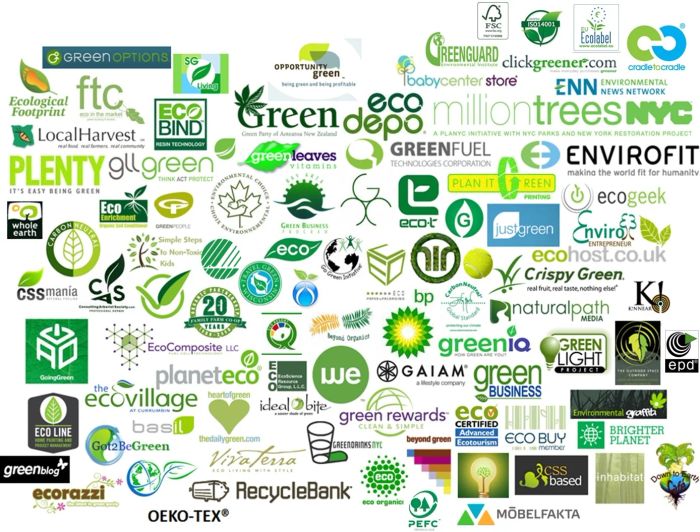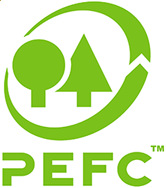
Eco Labels for Furniture: A Comprehensive Guide
Eco Labels for Furniture: A Comprehensive Guide
Best Platforms to Find Interior Design Products
21 Affordable Italian Furniture Brands for Commercial and Contract Projects
15 Key Factors in Choosing Commercial Furniture for Hospitality, Offices, and Public Space Projects
6 best specification-making tools for interior designers in 2024
Introduction
In today's environmentally conscious world, eco-labels guide consumers toward sustainable choices. With growing awareness of the environmental impact of everyday products, eco-labels have become essential in the furniture industry, ensuring that the products we use are stylish, functional and environmentally friendly.
When choosing eco-labelled furniture, it's also important to consider how these pieces fit within a space's broader design and functionality. For example, ensuring that furniture is personalized to guest needs in hotel rooms can align with sustainable practices. Additionally, understanding the latest interior design trends can help select eco-friendly products that are also in vogue.
What are Eco Labels?
Eco-labels are certifications given to products that meet specific environmental criteria. These labels inform consumers about the environmental impact of their products, promoting sustainable production and consumption practices. The concept of eco-labelling originated in the late 20th century as a response to increasing environmental concerns and the need for transparent information about product sustainability.
Benefits of Eco Labels
Eco-labels offer numerous benefits, including:
Environmental Impact: Encouraging sustainable production practices and reducing the products' overall ecological footprint.
Consumer Trust and Confidence: Ensuring products meet high environmental standards builds consumer trust.
Market Competitiveness: Differentiating products in a crowded market gives eco-friendly products a competitive edge.
Types of Eco Labels
Eco-labels can be categorized into three main types:
Type I: Third-Party Certification - These are awarded by independent organizations based on multiple criteria.
Type II: Self-Declared Environmental Claims - Manufacturers make these claims that are not independently verified.
Type III: Environmental Product Declarations (EPD) - These provide detailed data on the environmental impact of a product throughout its lifecycle.
Common Eco Labels for Furniture
Several eco-labels are commonly used in the furniture industry, including:
FSC (Forest Stewardship Council)
PEFC (Programme for the Endorsement of Forest Certification)
GREENGUARD
EU Ecolabel
Cradle-to-Cradle Certified
Forest Stewardship Council (FSC)
Overview: The FSC label ensures that products come from responsibly managed forests that provide environmental, social, and economic benefits.
Criteria for Certification: FSC certification requires adherence to principles that promote sustainable forest management, including protecting biodiversity, water resources, and ecosystems.
Benefits of FSC-Certified Furniture: Consumers can trust that FSC-certified furniture is made from wood harvested in a way that maintains the forest's biodiversity, productivity, and ecological processes.
Some of the brands that have The FSC label:
Programme for the Endorsement of Forest Certification (PEFC)

Overview: PEFC is another leading forest certification system that promotes sustainable forest management through independent third-party certification.
Criteria for Certification: PEFC certification involves rigorous standards that ensure forests are managed sustainably, considering ecological, social, and economic factors.
Benefits of PEFC-Certified Furniture: PEFC-certified furniture supports forest conservation and sustainable management practices, helping to preserve forest ecosystems for future generations.
Some of the brands that have The PEFC label:
GREENGUARD Certification

Overview: The GREENGUARD certification program aims to reduce indoor air pollution and the risk of chemical exposure by certifying products that meet stringent emissions standards.
Criteria for Certification: Products must meet rigorous chemical emissions limits, helping to create healthier indoor environments.
Benefits of GREENGUARD-Certified Furniture: GREENGUARD-certified furniture contributes to better indoor air quality, making it a healthier choice for homes and workplaces.
Some of the brands that have The GREENGUARD Certification:
Check here if the product has The GREENGUARD Certification.
Cradle-to-Cradle Certified

Overview: Cradle-to-cradle certification assesses a product's safety to humans and the environment and its design for future life cycles.
Criteria for Certification: Products are evaluated across five categories: material health, material reutilization, renewable energy, water stewardship, and social fairness.
Benefits of Cradle-to-Cradle Certified Furniture: This certification ensures that furniture is designed with a focus on sustainability and the circular economy, promoting products that can be safely reused or recycled.
How to Choose Eco-Friendly Furniture
When choosing eco-friendly furniture, consider the following tips:
Look for Certification Labels: Ensure the furniture has recognized eco-labels like FSC, PEFC, GREENGUARD, EU Ecolabel, or Cradle to Cradle.
Ask Retailers: Inquire about the sustainability practices of the manufacturers and the materials used in the furniture.
Research: Use resources like the certification bodies' websites to verify the authenticity of the eco-labels.
Some of the brands that have The Cradle-to-cradle certification:
Check here if the product has The Cradle-to-cradle certification.
Case Studies
Success Stories: Numerous furniture companies have successfully implemented eco-labels, gaining consumer trust and market share. For instance, IKEA's commitment to FSC certification has bolstered its reputation as a sustainable brand.
Consumer Feedback: Surveys show that consumers are willing to pay a premium for eco-labelled furniture, reflecting the growing importance of sustainability in purchasing decisions.
Challenges and Criticisms
Despite the benefits, eco-labelling faces challenges such as:
Greenwashing: Some companies may falsely claim eco-friendly practices.
Certification Costs: Obtaining certification can be expensive, especially for small businesses.
Complex Criteria: The complexity of certification criteria can be a barrier to entry for some manufacturers.
Future Trends in Eco Labeling for Furniture
The future of eco-labelling in furniture looks promising with innovations in sustainable materials and production techniques. Emerging eco-labels and evolving standards are expected to enhance the credibility and impact of eco-labels further.
Conclusion
Eco-labels are essential tools in promoting sustainability in the furniture industry. Clear, trustworthy information helps consumers make informed choices that benefit the environment and society.
FAQs
What is the difference between FSC and PEFC?
FSC and PEFC are forest certification systems but have different standards and certification processes.
How can I verify the authenticity of an eco-label?
Check the certification body's website or contact them directly to verify the label's authenticity.
Are there any global standards for eco-labelling?
While international guidelines exist, specific standards can vary by region and certification body.
How do eco-labels affect the price of furniture?
Although eco-labeled furniture may be more expensive due to sustainable materials and certification costs, it offers long-term environmental benefits.
Can I trust self-declared eco-labels?
It's essential to be cautious with self-declared labels and seek verification from independent certification bodies when possible.
Further Read:
15 Key Factors in Choosing Commercial Furniture for Hospitality, Offices, and Public Space Projects
21 Affordable Italian Furniture Brands for Commercial and Contract Projects
How to Design a Restaurant Booth: Dimensions, Layout, Details, and Mistakes to Avoid
Best Platforms to Find Interior Design Products
How to Choose Flooring Tiles for Your Bathroom: A Professional Guide
Criteria to Choose the Right Sofa: A Professional Guide for Interior Designers
12 Most Used Interior Design Websites
How to Find Furniture from a Photo
10 Best Interior Design Tools And Their Key Features